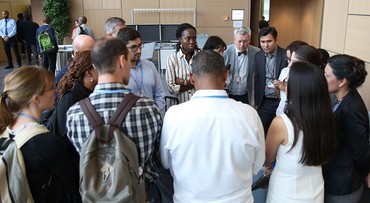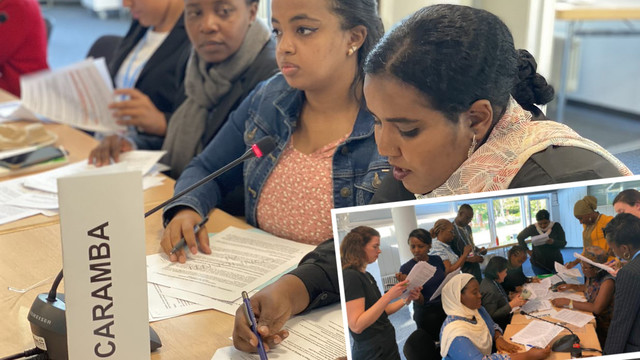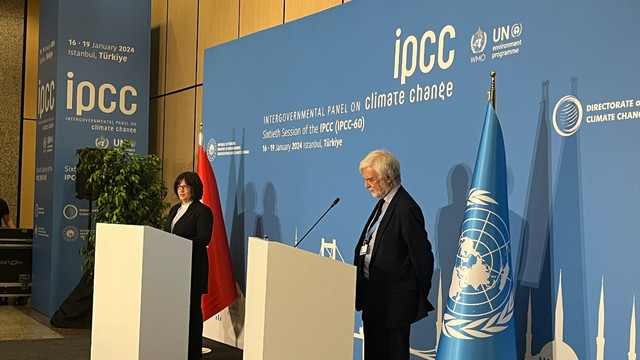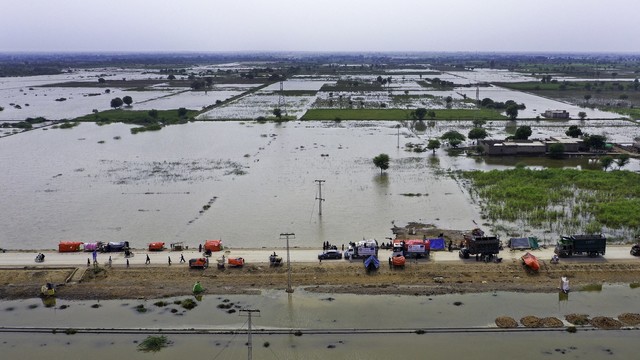COP19: What the Least Developed Countries expect from the climate talks
Gaps between the expectations of developing countries and the low emissions targets and climate finance promised by developed countries must be bridged at the Warsaw climate talks.

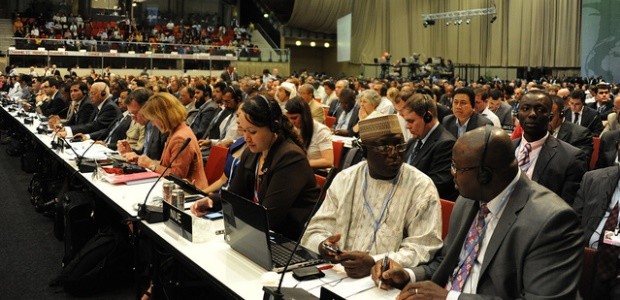
Climate change negotiators have several gaps to bridge at the COP19 talks. Photo credit: Oxfam International, CC BY-NC-ND 2.0.
Delegates from more than 190 countries meet next week in Warsaw, Poland for COP19, the 19th Conference of the Parties to the UN Framework Convention on Climate Change, the latest round of negotiations towards an international climate agreement.
Likely to be among the most outspoken in the talks are the Least Developed Countries (LDCs). This group, which represents around one billion people from the world’s poorest countries, has high hopes for the climate talks.
The LDCs have contributed less than one per cent to historical greenhouse gas emissions. Yet, they are suffering disproportionately from the impacts of climate change. People living in these countries from 2010 to mid-2013 were five times more likely to die from climate related disasters than people living anywhere else.
The IPCC’s Fifth Assessment Report in September paints a grim picture of increased climate impacts for the LDCs in the coming years, including increasingly severe tropical storms, droughts and floods. That’s why the LDCs will come to COP19 ready to negotiate lasting solutions for the people most vulnerable to climate change.
Where’s the money?
Finance is key to unlocking many of the actions necessary to address climate change in developing countries. Providing finance also builds trust as it demonstrates – in measurable terms – the developed countries’ commitment to action.
Yet climate finance remains a promise that is worryingly under-delivered. Out of the assessed US$5 billion needed to implement the projects identified by the LDCs (under their National Adaptation Programmes of Action or NAPAs), developed countries have committed only US$775 million.
In 2009, developed countries committed to a goal of mobilising US$100 billion a year by 2020 to address the needs of developing countries. However, how they will achieve this remains unclear. Addressing the ‘gap’ in climate financing and creating plans of action are key LDC expectations for Warsaw.
The phrase ‘finance gap’ within the UNFCCC, can be ambiguous. Two primary gaps remain:
- The gap between the estimated costs of climate change actions in developing countries and the funds that nations pledged. The World Bank estimates that $30-100 billion will be needed to finance climate adaptation annually by 2030 and $140-175 billion will be required to reduce greenhouse gas emissions (called mitigation). The sums required are significantly larger than the pledged US$100 billion.
- There is a five-year gap in financial commitments that needs filling. Developed countries have agreed to maintain average finance levels, roughly US$10 billion a year, which they provided during 2010-2012, until 2015. But they have made no pledges for 2015-2020, leaving a five-year gap until the 2020 pledge begins.
Climate-vulnerable least developed countries need increased finances to adapt to the impacts of climate change. How will these resource-poor countries adapt without the necessary funds in place?
Clearly a roadmap is needed for developed country parties to meet their financial pledges, with the aim of increasing them beyond 2020.
Mind the ambition gap
Almost 200 nations agreed in 2010 to limit rising temperatures to below 2 degrees Celsius (3.6 F), but many countries failed to make emissions cuts in their countries to back up their promises. A gap exists between this globally agreed goal to reduce emissions and countries’ unambitious targets.
The UN Environment Programme’s annual emissions gap report, released yesterday, shows that global emissions of carbon dioxide under a business-as-usual scenario are set to rise by 59 gigatonnes by 2020. Yet to meet the 2°C goal requires nations to hold global emissions to no more than 44 gigatonnes of CO2 by that year.. This means we’re on a trajectory to exceed the 2 degree Celsius ceiling.
Roadmap for the 2015 Agreement
A key conference aim is to agree on emissions cuts under a new climate agreement that will be applicable to all nations. It will be signed in 2015, but come into force in 2020.
Since 2011, the Least Developed Countries have clearly called for the new agreement to be a protocol under international law and for parties to submit a negotiation text to the COP by the end of 2014. This would allow time to engage in domestic stakeholder consultation and build political will, as well as ensure high-level inputs early enough to adopt the new protocol in 2015. The LDC proposals call for agreement on a clear roadmap that will prescribe substantial progress at the upcoming meetings in 2014 and allow time for negotiating the scope, structure and design of the 2015 agreement.
Loss and Damage
People affected by the impacts of climate change may face damage to their property or health, their assets may be destroyed or they might suffer the tragic loss of a family member.
Reducing greenhouse gas emissions and adapting to climate change will help reduce the loss and damage that people have to endure. But there are some losses and damage that are unavoidable due to historical emissions. When loss and damage can’t be avoided, it needs to be addressed and reimbursed.
The conference of parties decided in 2012 to establish institutional arrangements to address loss and damage due to persistent pressure from the LDCs and island nations. The group will continue to push for a decision regarding an institutional arrangement for loss and damage in Warsaw.
Closing the climate finance gaps, setting ambitious targets for reducing greenhouse gases and addressing the loss and damage the world’s poorest people often face is of paramount importance to the Least Developed Countries Group. It will continue to push hard for this in Warsaw, and for the development of work plans to deliver action in 2014 and beyond.
This guest blog is written by Brianna Craft, a consultant working with IIED's climate change group.
Find out how IIED is supporting the Least Developed Countries at the international climate negotiations.
